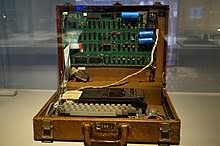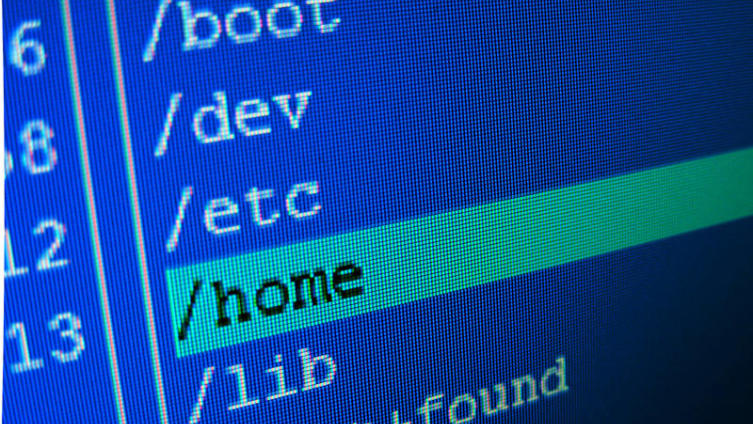How much did the first personal computer cost?
 I must say that April 1 was a suitable day for the birth of a company that was going to do business at that time not at all serious, namely the sale of personal computers. In 1976, in the United States, this business seemed highly dubious. Who could be interested in personal computers at that time? Only crazy hams. For them, parts were sold in the store, from which the Altair 8800 home computer could be assembled without special difficulties. Those who did not want to bother with a soldering iron and with a setting could ask the seller in the store to assemble it for a small additional fee. A home computer could be connected to a TV and, paying for an additional communication unit, to a household cassette recorder. What to do next? No one knew. So the founders of the Apple company, the famous Steve Jobs (1955−2011) and the now less known Steve Wozniak, not only two namesakes, but also two friends, decided to take up a clearly unsuccessful business. Fools! Stupid kids!
I must say that April 1 was a suitable day for the birth of a company that was going to do business at that time not at all serious, namely the sale of personal computers. In 1976, in the United States, this business seemed highly dubious. Who could be interested in personal computers at that time? Only crazy hams. For them, parts were sold in the store, from which the Altair 8800 home computer could be assembled without special difficulties. Those who did not want to bother with a soldering iron and with a setting could ask the seller in the store to assemble it for a small additional fee. A home computer could be connected to a TV and, paying for an additional communication unit, to a household cassette recorder. What to do next? No one knew. So the founders of the Apple company, the famous Steve Jobs (1955−2011) and the now less known Steve Wozniak, not only two namesakes, but also two friends, decided to take up a clearly unsuccessful business. Fools! Stupid kids!
But for some reason, God favors fools and children. Steve Wozniak, who knew how and loved to mess with a soldering iron and with radio components, developed and assembled a home computer of his own design. And Steve Jobs was convinced that a home computer was worth it to sell it in a store. Not only did he believe it himself, but – a born fiery agitator – was able to convince Paul Terell, the owner of the Byte store in the town of Palo Alto, as well. Of course, a personal computer is not a bottle of whiskey. True, Palo Alto was an outstanding city. Here was Stanford University. And besides the university, since 1969 in Palo Alto the Xerox research center, PARC Xerox (PARC – Palo Alto Research Center) has been located. By the way, one of the developments that the researchers were doing here was the development of a personal computer. A holy place is never empty. A little later, next to the PARC Xerox, high-tech companies grew like mushrooms after the rain. And the industrial area of Palo Alto began to be called the “Silicon Valley” (“Silicon Valley”). In a word, Paul Terrell estimated the possibilities and needs of the local market and gave two Steves an order: to assemble and deliver 50 fully equipped personal computers. In 1976, a “fully loaded” personal computer was considered somewhat different, something that we mean by this term now. The complete set included a printed circuit board with an assembly having the ability to connect to a household TV, a power supply, a keyboard. As always, for a fee, the buyer could purchase a communication unit with a cassette recorder. The case was not fully equipped with the Apple I personal computer. Here, everything was left to the discretion of customers. For example, Steve Wozniak made a wooden box equipped with a keyboard for “his” board. About 1984, Soviet radio amateurs could assemble a similar “miracle of technology” from Soviet microcircuits (as far as I remember, not at all scarce). The home computer circuit was printed in the journal Radio. It also described the setup process and even the texts of programs for the home computer. I then worked at an enterprise where such devices were assembled by mass production and used to control the huge rolling mills that were located at metallurgical plants throughout the Soviet Union – from Cherepovets to Bekabad and Orsk. By the way, these devices were enclosed in a dustproof, beautiful plastic or metal case. But this is not about me, so back to our friends. It took them 15 thousand dollars to complete the order. The money was raised thanks to the organizational talents of Steve Jobs. He borrowed 5 thousand from friends, bought components on credit. Credit Steve Jobs was supposed to pay a month later, when the money received for the sale of computers will be transferred to his account. S. Jobs also sold his car, a Volkswagen van, and Steve Wozniak – a Hewlett-Packard 65, his favorite engineering calculator. This calculator was considered at that time the smallest programmable calculator in the world. In a new store, it cost about $ 800. Steve Wozniak bailed out for him $ 500. So to speak, everyone has contributed. “Assembly shop” is located in the garage of Jobs. All work, paid very modestly, was carried out by friends and relatives. Steve Jobs’ mother was a serious secretary in this company, which was not serious – her task was to answer the phone. She also led simple accounting. A month later, as agreed, all 50 computers went to Paul Terell’s store. The wholesale price was set at 500 dollars. Plus various trade margins. The retail price of the first Apple I personal computer was $ 667. And here Steve Wozniak intervened in the pricing process. The guy had a small oddity: he liked the numbers, which consisted of the same numbers. It’s no secret that such numbers on the keyboard are easier to type.




